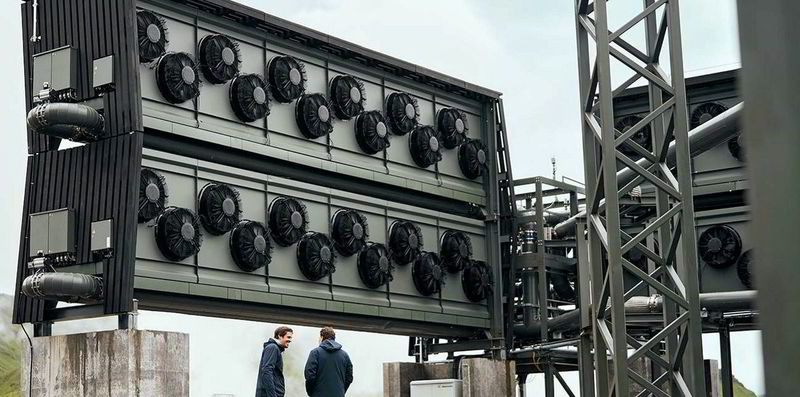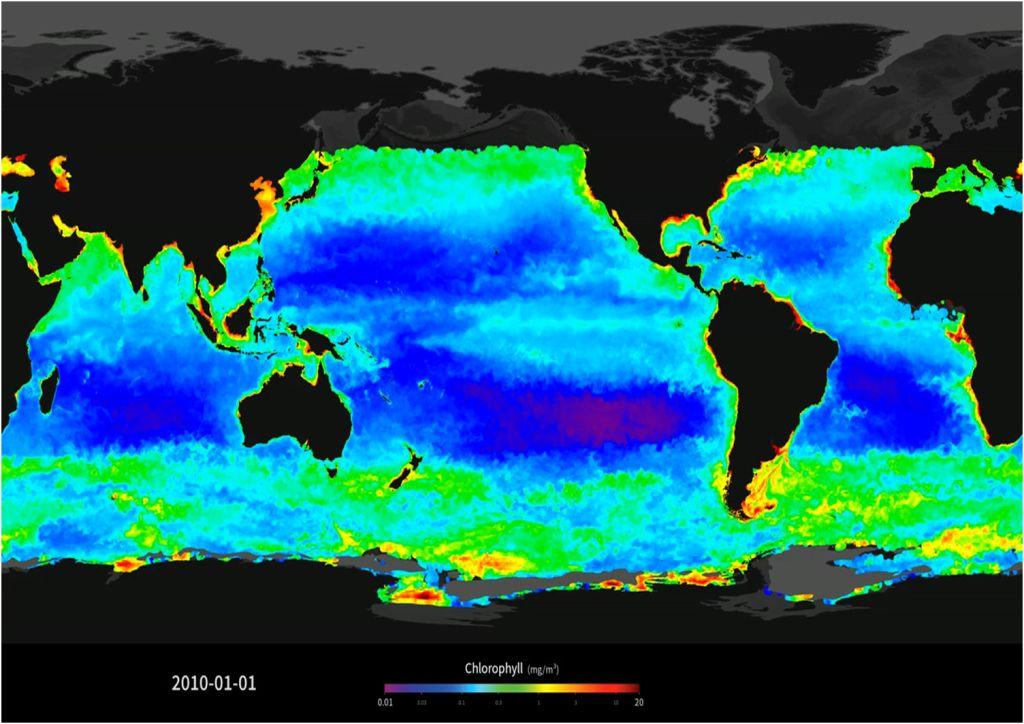Direct Air Capture of CO₂ at PPM levels is a folly
The physical laws of thermodynamics rule that it takes a lot of energy to capture wide-spread rare gas molecules into a tight space
The article below extrapolates the costs of ‘proven’ technologies for direct air capture and sequestration of CO₂. To have any hope of cleansing our planet’s atmosphere, MILLIONS of these complex engineered contraptions would have to be manufactured, transported, and installed around the world. Of course, the fossil fuel industry would love to take on the task of doing this because of the trillions of dollars to be made from building the devices and producing the vast amounts of fuel required to make them work to reduce the entropy of the gas molecules emitted from driving the machines capturing the gas.
Plants already do this work using solar energy. They too are inefficient, but they use the small fraction of the solar energy captured that passes through their cells to grow more and ever more plants until space and/or their simple nutrients are used up. Nevertheless, they are self-reproducing and grow exponentially as long as they can, capturing CO₂ to make the sugars they use for fuel and building blocks for their structures. As long as the carbon remains captured in living or dead plant matter it is well concentrated and easily sequestered.
With appropriate changes farming and forestry techniques a lot of carbon can be captured and sequestered; but potentially much more can be done by fertilizing AND FARMING the nearly sterile areas of ocean over abyssal depths These comprise approximately 1/5 of the Earth’s total unfrozen surface. The US National Academies of Science, Engineering, Medicine (2021) A Research Strategy for Ocean-based Carbon Dioxide Removal and Sequestration — especially Chapter 3, Nutrient Fertilization provides an excellent review.
The Featured Image above, based on satellite tracking of the amount of chlorophyll-a in the oceans shows ocean deserts (i.e., areas where there is virtually no chlorophyll – and thus no photosynthesis) as dark blue or purple. Even some of the lighter blue areas might also be made more productive with fertilization.
The National Academies report considers mainly the first part of the process – fertilization mainly by providing iron in micronutrient quantities. This is often all that is required to enable large blooms of microalgae, but the blooms also can cause problems, and the individual algal cells aren’t large enough to sink the carbon they capture out of the zone where decomposition soon releases the carbon back to the atmosphere.
What is missing in the National Academies report is the need for active seeding and farming of appropriate ecosystems of consumers to eat and package the microalgal carbon content into fecal pellets and dead bodies dense enough to sink into the abyssal depths where the carbon will be incorporated into the bottom sediment. However, unlike mechanical contrivances that have to be manufactured, once the appropriate mix of ‘seeds’ is worked out, the suite of consumer organisms will also with some appropriate tweaking by the farmers, self-reproduce and grow exponentially to meet the demand,
Yes, it is quite likely there will be eggs broken and catastrophic major failures (easily stopped by stopping the algal fertilization with iron), but if we don’t have other proven means of sequestration, the price of not trying this reasonably quick and thermodynamically plausible solution could well be the completion of global mass extinction and the end of the human species.

by Leigh Collins, 14/09/2021 in Recharge
‘The amount of energy required by direct air carbon capture proves it is an exercise in futility’
Removing CO2 directly from the air requires almost as many joules as those produced by burning the fossil fuel in the first place, writes Leigh Collins
Capturing CO2 emissions using direct-air-capture (DAC) technology requires almost as much energy as that contained in the fossil fuels that produced the carbon dioxide in the first place, according to new analysis.
In 2020, the world used 462 exajoules (EJ) of energy from fossil fuels, which resulted in 32 billion tonnes of CO2 emissions. Capturing that carbon dioxide through DAC — which sucks the greenhouse gas out of the air — would require 448EJ, according to calculations by Australian maths-as-a-service company Keynumbers.
Australia needs a government formed of people who understand and accept the reality of the physical world, not one formed of fossil fuel puppets led by Scotty from Marketing (a.k.a. Capt. Humbug).
Working WITH our multi-billionaires
Scotty from marketing and his fellow puppets work assiduously to protect fossil fuel multibillionaires (not all of them are even Australian – e.g., Adani) and make them even richer. And then there was Clive Palmer last week
Green’s Adam Bandt’s National Press Club address this week proposes taxing Australia’s billionaires to support otherwise unprofitable community services.
However, I think Australia has at least one multi-billionaire who is already doing a lot to develop ‘green’ industries to minimize carbon emissions. Dr Andrew Forrest (i.e., ‘Twiggy’), Australia’s second richest person last time I looked, may have stepped on more than a few toes building his industrial empire, but I am unaware of any other person who parked his industries and iron mines in a charitable foundation and spent several years EARNING a doctorate in marine sciences and establishing a substantial marine sciences lab, aside from pledging upwards of a billion dollars to establish zero emissions mining and manufacturing systems.
Hopefully we can elect the kind of people to our Parliament who have the foresight, understanding and integrity to persuade and work with people like Forrest who seems inclined to invest significant fractions of their private resources in the fight against likely runaway global warming. Unfortunately, several narcissistic and hedonistic multibillionaire fossil fuel special interests are doing a very effective job persuading their current Parliamentary puppets to spend public resources shoveling more carbon fuel onto the fires of global warming.
In his own words, Scotty makes it blindingly obvious that he is vastly more interested in stoking his patrons’ fossil fuel fires than in stopping their emissions to mitigate global warming and the possible mass extinctions of humans and the millions of other species of life we share our planet with.

If that wasn’t enough, here’s a choice of some more of Scotty’s thinking about stopping the Apocalypse of global warming
15/02/17 via the Guardian
09/09/2021 via the Guardian
The future of power: What’s behind Australia’s push for gas-fired energy | ABC Four Corners
We need to turn away from the the Apocalypse on the road to hothouse hell, and we won’t do this by continuing with business as usual!
It seems to have taken the clear thinking of Greta Thunberg, a 16 year-old girl who concluded school was pointless as long as humans continued their blind ‘business as usual’ rush towards extinction.

In other words, wake up! smell the smoke! see the grimly frightful reality, and fight the fire that is burning up our only planet so we can give our offspring a hopeful future. This is the only issue that matters. Even the IPCC’s hyperconservative Sixth Assessment Report that looks at climate change’s global and regional impacts on ecosystems, biodiversity, and human communities makes it clear we are headed for an existential climate catastrophe if we don’t stop the warming process.
Scott Morrison and his troop of wooden-headed puppets are doing essentially nothing to organize effective action against the warming. In fact all they doing is rearranging the furniture in the burning house to be incinerated along with anything and everyone we may care about.
In Greta’s words, “even a small child can understand [this]”. People hope for their children’s futures. She doesn’t want your hopium. She wants you to rationally panic enough to wake up, pay attention to reality, and fight the fire…. so our offspring can have some hope for their future. Vote Climate One’s Traffic Light Voting System will help you use your preferential votes wisely on behalf of our offsprings’ future.

Featured Image: still frame from a NASA MODIS video of the changing distribution of chlorophyll in Earth’s oceans, showing where photosynthetic carbon fixation is occurring. Most is in near-shore areas of comparatively shallow waters where the fixed carbon is fairly rapidly consumed and cycled back into the atmosphere by the aerobic metabolism of microorganisms, animals and plants. The dark blue to lavender areas are the ocean deserts above abyssal depths where little or no photosynthesis can occur due to the lack of even a few iron and/or magnesium atoms required as micro-nutrients for the formation of a few critical enzymes in the photosynthetic pathway. / via William Hall.
